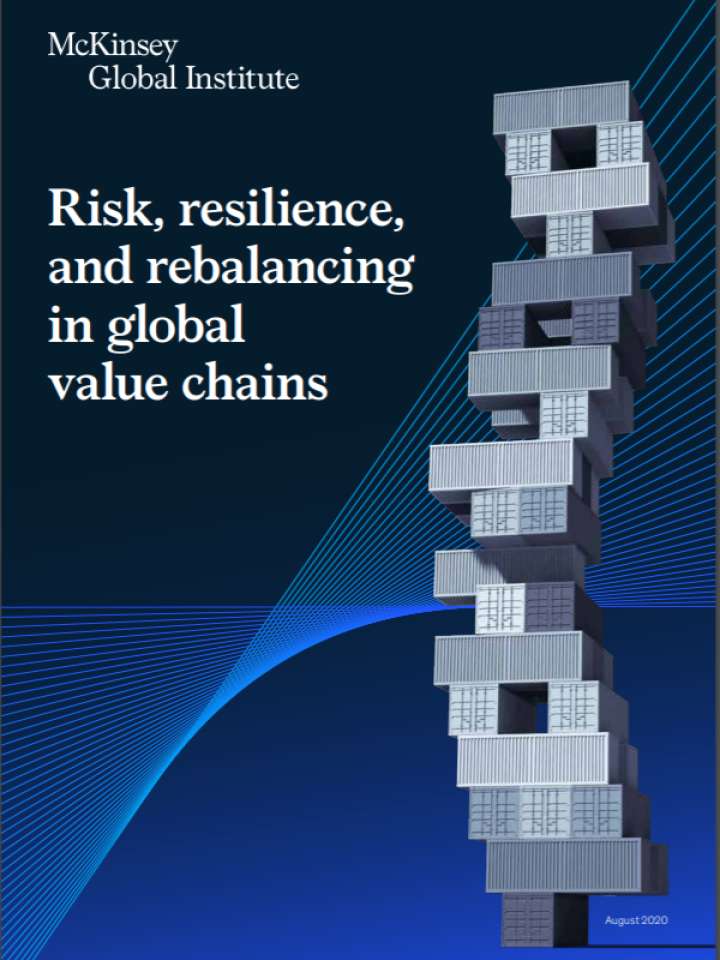Risk, resilience, and rebalancing in global value chains
In recent decades, value chains have grown in length and complexity as companies expanded around the world in pursuit of margin improvements. Since 2000, the value of intermediate goods traded globally has tripled to more than $10 trillion annually. Businesses that successfully implemented a lean, global model of manufacturing achieved improvements in indicators such as inventory levels, on-time-in-full deliveries, and shorter lead times.
However, these operating model choices sometimes led to unintended consequences if they were not calibrated to risk exposure. Intricate production networks were designed for efficiency, cost, and proximity to markets but not necessarily for transparency or resilience. Now they are operating in a world where disruptions are regular occurrences. Averaging across industries, companies can now expect supply chain disruptions lasting a month or longer to occur every 3.7 years, and the most severe events take a major financial toll.
The risk facing any particular industry value chain reflects its level of exposure to different types of shocks, plus the underlying vulnerabilities of a particular company or in the value chain as a whole. New research from the McKinsey Global Institute explores the rebalancing act facing many companies in goods-producing value chains as they seek to get a handle on risk—not ongoing business challenges but more profound shocks such as financial crises, terrorism, extreme weather, and, yes, pandemics.
Today technology is challenging old assumptions that resilience can be purchased only at the cost of efficiency. The latest advances offer new solutions for running scenarios, monitoring many layers of supplier networks, accelerating response times, and even changing the economics of production. Some manufacturing companies will no doubt use these tools and devise other strategies to come out on the other side of the pandemic as more agile and innovative organizations.
Explore further
